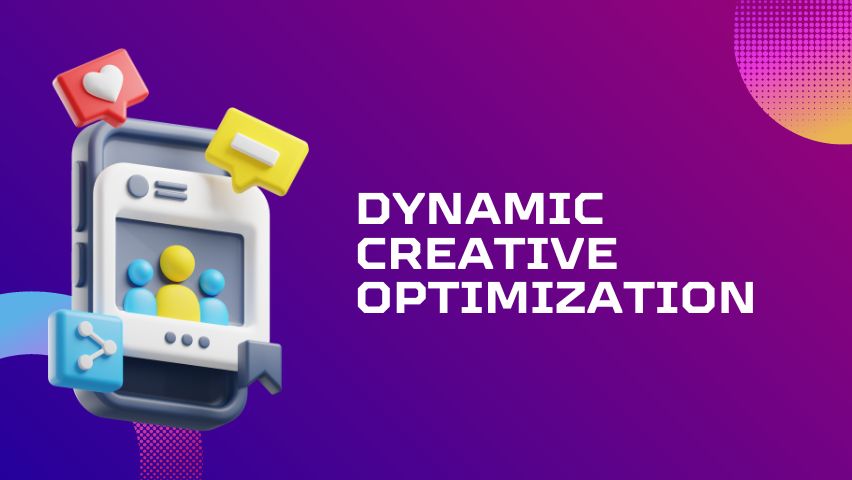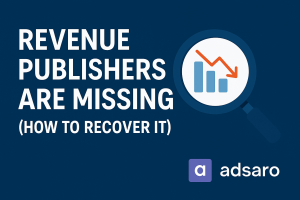In today’s fast-paced digital advertising world, Dynamic Creative Optimization (DCO) has emerged as a game-changer. This cutting-edge technology enables brands to deliver highly personalized, real-time ads that resonate with individual consumers. By leveraging data such as user behavior, demographics, and preferences, DCO ensures ads are relevant and timely. But what exactly is DCO, and why is it becoming essential for success in the digital landscape? In this blog, we’ll explore the DCO process, its key benefits, and why it’s crucial for both advertisers and publishers in the modern advertising ecosystem.
What is Dynamic Creative Optimization (DCO)?
Dynamic Creative Optimization (DCO) is an advanced ad technology that customizes ads for individual consumers. It adjusts elements like images, text, and calls-to-action in real-time. DCO uses data such as user behavior, demographics, location, device, and past interactions. This ensures the right message reaches the right audience at the right time.
Rather than relying on a static ad, DCO takes into account various data points to dynamically assemble the most effective version of the ad for each impression. This creates personalized ads that increase relevance and drive higher engagement.
How Does Dynamic Creative Optimization (DCO) Work?
The process behind Dynamic Creative Optimization (DCO) is relatively simple but highly powerful. Here’s how it works:
- Data Collection: DCO platforms gather data on user behavior, preferences, and demographics. This data can come from various sources, including website visits, app usage, past purchases, and social media interactions.
- Ad Personalization: Based on the collected data, DCO platforms generate personalized creative elements. These may include tailored headlines, product images, and location-specific messaging to create a more engaging experience for the user.
- Real-Time Optimization: DCO algorithms analyze the user’s current context (such as the device they’re using or their time of day) and serve the most relevant creative version. This ensures the ad is contextually appropriate and engaging.
- Continuous Testing and Learning: DCO continuously optimizes ad performance by running multiple versions of an ad, testing different elements, and analyzing which combinations drive the best results.
Why Dynamic Creative Optimization (DCO) Matters for Advertisers
Dynamic Creative Optimization (DCO) offers significant advantages for advertisers, making it an essential tool in any ad strategy. Here’s why DCO matters:
- Enhanced Personalization: DCO allows advertisers to personalize ads based on user preferences and behaviors. Personalized ads are more likely to resonate with audiences, leading to higher engagement and better conversion rates.
- Improved Performance: By dynamically optimizing creative elements, DCO helps improve key metrics such as click-through rates (CTR), return on ad spend (ROAS), and overall ad performance.
- Efficient Use of Ad Budget: DCO ensures that your advertising budget is spent on the most effective ad variations. By continuously testing and optimizing, DCO helps maximize the impact of every dollar spent.
- Better User Experience: Users are more likely to respond positively to ads that feel relevant and timely. DCO helps deliver ads that align with the user’s current needs, providing a seamless and engaging experience.
- Scalability: DCO makes it easier to scale personalized advertising efforts. Advertisers can run thousands of ad variations across different platforms and channels without having to manually create and manage each one.
Key Benefits of Dynamic Creative Optimization (DCO)
- Increased Engagement: Ads that are tailored to an individual’s preferences lead to more meaningful interactions. Higher engagement is one of the key outcomes of DCO.
- Higher Conversion Rates: By showing users the most relevant ads, DCO increases the likelihood of conversions, whether it’s a sale, a sign-up, or another action.
- Real-Time Adaptation: DCO can quickly adjust to changes in user behavior, market trends, and external factors, ensuring that ads remain relevant and effective.
- Data-Driven Insights: With DCO, advertisers can gather valuable insights into consumer behavior, helping them refine future ad campaigns.
- Multi-Platform Consistency: DCO ensures that your personalized creative is consistent across all platforms, devices, and channels, creating a cohesive brand experience.
Implementing DCO in Your Advertising Strategy
To take full advantage of Dynamic Creative Optimization (DCO), advertisers should integrate it into their overall advertising strategy. Here are a few steps to get started:
- Choose the Right DCO Platform: There are several DCO platforms available, so choose one that aligns with your campaign goals and offers robust data analysis and creative optimization capabilities.
- Segment Your Audience: Define your audience segments based on factors like demographics, behavior, and intent. This will help you deliver more personalized ads.
- Develop Flexible Creative Assets: Prepare a range of creative assets (images, copy, videos, etc.) that can be dynamically combined by the DCO platform.
- Test and Optimize: Continually monitor and optimize your campaigns based on performance data. DCO is about constant learning and improvement.
- Scale: Once you have optimized your creative, scale your campaigns across multiple channels and devices for maximum reach.
Conclusion
Dynamic Creative Optimization (DCO) is now essential in digital advertising. It delivers personalized, high-performing ad campaigns. DCO uses real-time data to tailor creative elements. This boosts engagement, conversion rates, and ad spend efficiency. As consumers expect more relevant and personalized ads, DCO is crucial for staying competitive. It will continue to shape the future of digital advertising by helping brands meet evolving consumer demands.
Key Takeaways:
- DCO uses real-time data to optimize ads for individual users.
- It drives better engagement, conversion rates, and ad performance.
- DCO is scalable and ensures efficiency in ad spending.
As the digital advertising landscape evolves, embracing DCO will be key to staying competitive and delivering impactful, personalized experiences to your audience.








Leave a Reply